- Home
- Gerald Durrell
Catch Me a Colobus Page 10
Catch Me a Colobus Read online
Page 10
‘They’ll just be coming out of the pubs in Bristol now,’ he said thoughtfully.
This had an instantaneous effect upon the potto, who, I feel, must have been a Temperance leader for, instead of running along the branch towards the camera, he turned tail and fled in the opposite direction. It took us about half an hour to catch him in the maze of branches. At last we recaptured him and put him back on the branch, and then he behaved beautifully, and we got the bit of film we wanted. But it had taken well over two hours to get a sequence which on the screen only lasted for possibly thirty seconds.
Of course, we also filmed the daily routine of cleaning and feeding the animals, though nobody could possibly describe looking after a collection of animals as routine work. They do their best to irritate and amaze you every day. For instance, we had a very handsome African kingfisher. Well, we couldn’t supply him with his natural food (which consisted of small lizards and snakes and a certain number of grasshoppers and locusts) in sufficient quantities, so we had to teach him to eat meat. But whenever he took a strip of meat he insisted on killing it by banging it on his log vigorously before he would eat it.
As I had warned Long John, there comes a time on every collecting trip when you begin to think that you know it all. This is a moment of great danger, for you never know it all, however hard you try. It is when you start getting pompous and arrogant about your own abilities that you are liable to make a mistake. I made a mistake once by thinking I knew it all, and got bitten by a snake, which wasn’t a pleasant experience. It taught me always to be cautious. But one day a hunter came in, bringing with him a most enchanting baby bird. It was a young White-crested hornbill. Now these birds are predominantly shiny coal-black, but the feathers on their heads are fluffy and pure white so they look as though they are wearing a sort of cotton wool hat. I was delighted with this because it was the only hornbill that we had got so far, and I gave Long John a long lecture on hornbills and their ways. Baby hornbills and baby toucans are usually easy to rear, and I felt convinced that with Tommy, as we called him, it would be a walkover. Shortly after his arrival, we chopped up some nice fruit, put Tommy on the animal table and dangled bits of fruit in front of his nose. He took not the slightest notice of it.
‘He’ll get used to it in time,’ I said, ‘but I suppose to begin with we’d better force feed him.’
We pushed a lump of fruit down Tommy’s throat, which he promptly regurgitated. We pushed another lump farther down, and after some minutes he managed to regurgitate that, too.
‘Perhaps he hasn’t settled down properly,’ I said to Long John. ‘We’ll leave him in his cage for a bit and then return. After all, we don’t know when the hunter got him. His mother may just have fed him and he isn’t hungry.’
So we put him back in his cage. Two or three hours later we got him out again and went through the same laborious process, but every time he regurgitated the fruit. We continued trying to feed him on fruit throughout the day, and he wouldn’t have it at all.
‘I can’t understand it,’ I said to Long John. ‘I really can’t. Most baby hornbills go mad after the first couple of feeds, and you can’t give them enough.’
By the following morning Tommy was beginning to look anything but bright and, although he was obviously hungry, he still refused his fruit.
‘Damn it,’ I said. ‘There’s only one thing for it. I’ll go and look him up in the book. There may be something funny about what they feed on.’
Now I, in my ignorance, was under the impression that all hornbills fed upon things like vegetables, fruit and insects, so they could be called, as it were, omnivorous. But when I looked Tommy up in the book I found that he was one of those very rare hornbills that fed almost exclusively off meat. What we’d been trying to do was stuff a lot of fruit down him which he didn’t like at all – rather like thrusting a raw steak down the throat of a convinced vegetarian. So we got Tommy out of his cage, put him on the table, chopped up a nice selection of meat, and within about thirty seconds he was gulping it down wolfishly. From that moment onwards he never looked back. It taught me a lesson, and I hope it taught Long John one, too.
It’s one thing to look after an animal in a well conducted zoo where you have everything at your command, both from the feeding and the veterinary point of view, but it’s a different kettle of fish when you are sitting five hundred miles from nowhere, with all your animals in little wooden boxes, and you have got to be everything from veterinary surgeon to maintenance man; and of course the animals, as soon as they have accepted captivity, start exhibiting all their eccentricities for your edification. It’s curious the fads and fancies your animals develop. One day they’ll go mad for oranges, for example, so you immediately increase your supply and shower oranges upon them. The next day, if you give them an orange, they look at you as though you had mortally offended them and decide that they would much prefer peanuts. But unless you indulge them, as you would indulge an elderly lady with her pekinese, they will not be happy and they will not thrive.
We had, at one stage, a Scaly Anteater, or Pangolin, brought in to us, which pleased me greatly because in the past, when I had collected in West Africa, I’d never had any success with these curious beasts that look like animated fir cones with tails. This was because they feed principally upon the ants that build their nests in the trees, the ferocious little black tree ants. I had given the question of the pangolins’ diet some thought while I was in England and had decided that, although they would take raw egg and milk and minced meat as a mixture, something was obviously still lacking, and that something must be a trace of formic acid. So on this occasion I had brought a small bottle of formic acid out with me in order to try it, and I made up the mixture for the pangolin every day. I often wondered, as I was doing it, how a TV cook would describe the recipe:
‘Take two tablespoons of powdered milk, darlings; beat it up into a quarter of a pint of water, and when this is of a smooth creamy consistency, add one raw egg and beat briskly until it is thoroughly mixed. Then place into this a handful of finely minced raw meat; stir gently, and finally garnish with a small portion of chopped tree ants’ nest and a drop of formic acid. Serve immediately. You will be delighted with the effect that this recipe will have on your guests, and will, without doubt, be the most popular pangolin party thrower of the season.’
It would, I reflected, be interesting to do a sort of cookery book for the animal collectors; a kind of Larousse Gastronomique dealing with the best way of serving maggots and so on.
By this time we had filmed most of the animals in the collection, and the rolls of film were mounting up, but we still hadn’t found two of the animals that we had specially come to Sierra Leone to get, the Red-and-black and the Black-and-white Colobus monkeys. The hunters would bring us in, monkeys of every other description, and in the end I began to despair.
‘It’s no good,’ I said to Chris. ‘We’ll have to organise a couple of monkey drives and see if we can’t get them that way.’
‘What are monkey drives?’ inquired Chris, puzzled.
‘Well, they do them down on the cocoa plantations,’ I explained. ‘They drive all the monkeys into a certain area, and then they kill them because they raid the cocoa crops and ruin them. They’re paid a bounty of a shilling a head, I think, by the government. I’ll send Long John into Kenema this morning and get him to find out the best areas which they think we can operate in. It should make quite an interesting film sequence, actually.’
So I sent Long John into Kenema and he returned, in due course, telling us he’d got the names of three or four villages where monkey drives were held fairly regularly, but that we would have to go and see the Paramount chief of the area to get his assistance before we could persuade the villagers to organise a monkey drive out of season. We decided to go and see the chief the following day, and organise the monkey drive as rapidly as possible.
&
nbsp; Next morning I got up at dawn as usual and wandered out on to the veranda waiting for Sadu to bring the tea. Long John never appeared before the tea; he clung to his bed like a limpet. I was standing, looking out over the misty forest, when I heard some noises in the valley just below the house. I knew it was monkeys because there was that lovely sound as they leap into the leaves, like the crash of surf on a rocky shore. But I couldn’t see, at first, exactly what kind of monkeys they were. They were heading for a big and rather beautiful tree that grew a couple of hundred yards from the veranda just below us. It had a sort of greeny-grey trunk, the leaves were a very vivid green, and it was covered, at this time of year, with bright cerise-pink seed pods about six inches long. There was another crash and rustle amongst the leaves. Then silence for a moment. And then, suddenly, it seemed as though the whole tree had burst into bloom, a bloom of monkeys. They were Red-and-black Colobus, and they were the most breathtaking sight. They had rich, shining, chestnut-red and coal-black fur, and in the morning sun they gleamed as though they had been burnished; they were magnificent. There must have been a dozen or so with a couple of babies, and it amused me the way the babies would use their parents’ tails or the branches of the tree quite indiscriminately, as a means of hoicking themselves from one place to another. To my surprise, they were not feeding on the seed pods but were stuffing themselves with vast quantities of young leaves and shoots of the tree. They were, without doubt, some of the most beautiful monkeys I’d ever seen, and I was determined that we were going to add a few to our collection, come what might. They stayed in the tree, feeding quietly and uttering little cries to each other, until Sadu suddenly arrived on the veranda with a great rattling tray of teacups. When I looked back at the tree they had all disappeared. As I sat sipping my tea, I remembered a stupid woman I’d met at a cocktail party in Freetown, who’d said, ‘I cannot understand why you’re going up country, Mr Durrell. There’s absolutely nothing to do or see there.’ I wish she could have seen those Colobus.
Later that day the team and I set off to interview the Paramount chief and elders of an area quite close to our village, leaving Long John behind to look after the animals. The Paramount chief and elders were having a meeting of some sort and we had to wait until this was over before we could have an audience. The chief himself was quite a young man and very handsome, dressed in plain white robes and a multicoloured skullcap, whereas most of the other elders were wearing flamboyant robes of different colours. I described, through an interpreter, why we’d come to Sierra Leone and, in particular, that we wanted to film, and catch alive, the two species of Colobus monkey. But I had to keep stressing the ‘catch alive’ part, because they were so used to killing the monkeys that they couldn’t quite grasp the fact that we wanted them alive and unhurt. I finally convinced the elders and the chief of what we wanted, and I hoped that they would tell the various villages and put the message across in no uncertain terms. Both the chief and the elders were delighted. They had such mobile, such beautiful faces. Their great black eyes were as cold and calculating as any street vendor in Petticoat Lane, but they could break into life at the slightest joke, when they’d glow and flash with an animation that is, by and large, totally lacking in a European. The chief said to us that, if we wanted merely to film the various types of monkeys, he thought one of the best places was a cocoa plantation not far from the village. There, he said, there were plenty of monkeys of all different kinds. But it wasn’t a good place to hold a monkey drive. We’d have to go to a village some way away for that. Since we were there, however, we thought we’d take a look at this cocoa plantation.
As we drove along to it, I gave some thought to the monkey situation in Sierra Leone. Every year, between two and three thousand monkeys are killed in monkey drives. This is due to the fact that the monkeys, unfortunately, have not been told about the importance of the cocoa crop to Sierra Leone’s economy, and so they pour into the cocoa plantations and do a great deal of real damage; therefore, of course, they have to be controlled. It is unfortunate, however, that every monkey suffers from this. When they organise a monkey drive in Sierra Leone, the participants are paid a bounty for the head of each monkey and every species is indiscriminately killed. This includes the two species of Colobus that we were after, in spite of the fact that these were, theoretically, protected by law. Here you had the situation, and a typical one, where one man was being hanged for another man’s crimes, because the Colobus, in fact, does no damage to the cocoa plantations at all. It was the same situation that I had seen all over the world and which always sickens me; governments ready to pay out millions of pounds for airy fairy schemes, but not a penny towards animal conservation. So you get the situation where three thousand monkeys are slaughtered per annum, half of which have committed no crime against the cocoa crop and which could, in fact, be a valuable tourist asset.
As soon as we arrived at the cocoa plantation I could see why monkey drives were necessary. On all sides there were large troops of them feeding in the young cocoa trees. But, as I had suspected, they were mainly Spot-nosed and Diana monkeys; not a single Colobus amongst them. When you saw the nurseries of young cocoa trees all laid out in regimented rows, you could quite see that a cocoa tree two or three years old could be completely stripped by a rowdy troop of monkeys in about ten minutes.
Chris and the others had set up the cameras and were filming the Spot-nosed and Diana monkeys in the trees, so I walked to the outskirts of the plantation and soon found myself in the forest. There’s no real demarcation line but eventually when you can no longer see any cocoa trees, only indigenous forest and the giant rustling bamboos spout up like solidified fountains, you realise that you are outside the plantation. Walking through these bamboos was a strange experience, for in the slightest breeze their great trunks – which are as thick as a man’s thigh – would creak and groan musically. It must have sounded like that rounding the Horn in an old sailing ship in a high wind. I was looking for Colobus monkeys, but the trouble is that in the tropics you are inclined to forget your objective because every step of the way is so filled with interest. You see a flower that you’ve never seen before, or a brilliantly coloured fungus or moth, or an equally brilliantly coloured tree frog or grasshopper. The tropics have been designed like a flamboyant Hollywood epic to make you realise how tiny and insignificant you really are, and how complex and beautiful the world is that you live in.
I walked quietly through the forest, pausing now and then to examine something that caught my eye and, suddenly, to my delight, I achieved my objective. There was a rustling crash ahead of me in the trees and, moving quietly towards it, I found myself just below a group of Black-and-white Colobus. It was quite a small group, consisting of about six individuals, and one of the females was carrying twins, which was very unusual. They were feeding quietly among the branches some fifty feet above me, and although they knew I was there they showed no fear at all. Looking at them through my field glasses I discovered that they were not nearly as colourful as the Red-and-black Colobus, but with their jet-black fur and snow-white tails, and a picture-frame of white fur round their faces, they had all the quiet dignity of some strange religious order. Eventually, when they had fed enough in that tree, they moved off. Now, I’d thought that the Red-and-black Colobus were pretty agile in the trees, but the Black-and-white ones had them beaten hands down. Without apparently even thinking, they would hurl themselves from the top of a one-hundred-and-fifty foot tree and crash into the branches below with a grace and precision that would make Billy Smart burst into tears of joy. I walked back to the plantation, where I found Chris quite exuberant for once since they’d got some excellent shots of Diana monkeys and Spot-nosed monkeys feeding. Then we packed up our gear and made our way back to the village.
It was market day, and I love African markets so much that we stopped and wandered about a bit. Everyone was so busy and so predatory, their beautiful eyes glowing, their teeth shining, everyone in
their Sunday best – the most vivid colouring. Piles of multicoloured fruit and vegetables, and long rows of highly-coloured bundles of cloth: it was just like walking through a rainbow. There was nothing, it seemed, that you could not buy, from dried frogs neatly skewered on slivers of bamboo, to sandals made out of old motor car tyres. As we were wandering about I was suddenly approached by a slim young man wearing a battered solar topee, white singlet and khaki shorts. He raised his topee politely and said, ‘Are you Mr Dullell, sir?’ in such a shrill squeaky voice that for a moment – in spite of his garb – I thought he was a woman.
I admitted that that was who I was.
‘The chief has sent me, sir,’ he said. ‘I am Mohammed and the chief has told me that you want to catch monkeys alive. Now I, sir, can organise it for you.’
‘Thank you very much,’ I said, cautiously, because he didn’t look to me the sort of man who could organise a monkey drive. Nevertheless, if the chief had sent him to me, he must know what he was doing.
‘When would you like to do a monkey drive, Mr Dullell?’ he went on.
‘As soon as possible. The monkeys I want to catch particularly are the Colobus – the Black-and-white and the Red-and-black. You know them?’
‘Yes, sir, I know them,’ he said. ‘There are plenty here, plenty.’
‘How, actually, do you do these monkey drives?’ I inquired.
‘Well, sir,’ he said. ‘First we find the monkeys, very early in the morning, and then we drive them, we drive them, we shout, we drive them, and we shout more, and then we drive them, until we get them to the right spot. Then we cut down all the trees all round. Then we must build, at the bottom of the tree in which the monkeys are, a coop.’

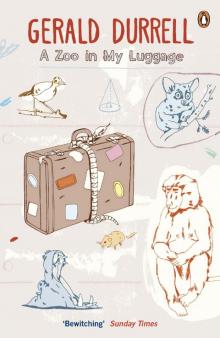 A Zoo in My Luggage
A Zoo in My Luggage The New Noah
The New Noah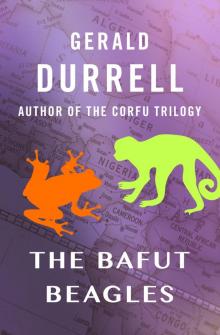 The Bafut Beagles
The Bafut Beagles Encounters With Animals
Encounters With Animals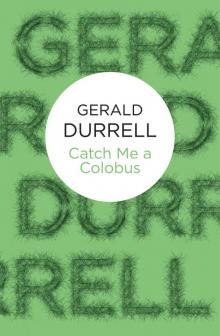 Catch Me a Colobus
Catch Me a Colobus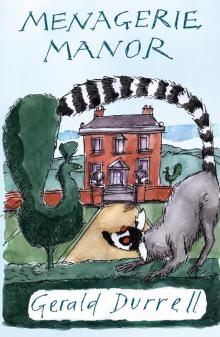 Menagerie Manor
Menagerie Manor The Picnic and Suchlike Pandemonium
The Picnic and Suchlike Pandemonium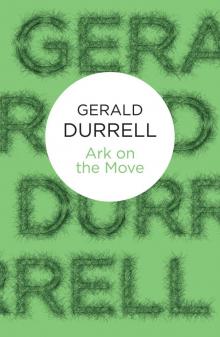 Ark on the Move
Ark on the Move My Family and Other Animals
My Family and Other Animals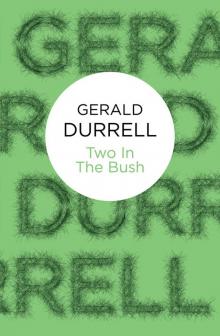 Two in the Bush (Bello)
Two in the Bush (Bello) The Stationary Ark
The Stationary Ark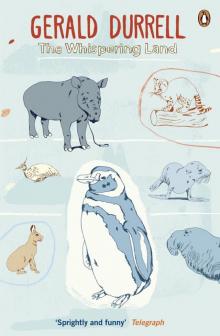 The Whispering Land
The Whispering Land Three Singles to Adventure
Three Singles to Adventure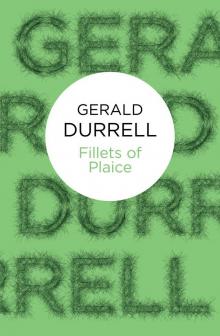 Fillets of Plaice
Fillets of Plaice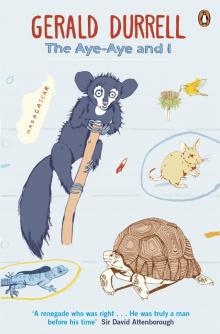 The Aye-Aye and I
The Aye-Aye and I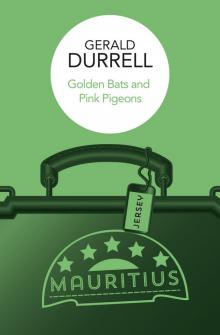 Golden Bats & Pink Pigeons
Golden Bats & Pink Pigeons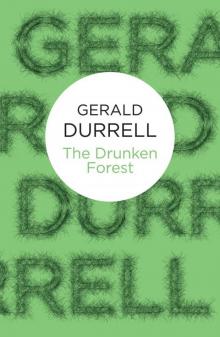 The Drunken Forest
The Drunken Forest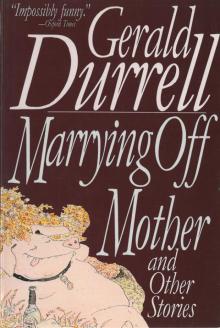 Marrying Off Mother: And Other Stories
Marrying Off Mother: And Other Stories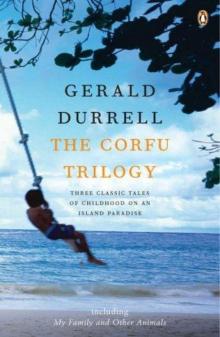 The Corfu Trilogy (the corfu trilogy)
The Corfu Trilogy (the corfu trilogy)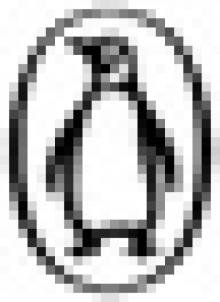 The Corfu Trilogy
The Corfu Trilogy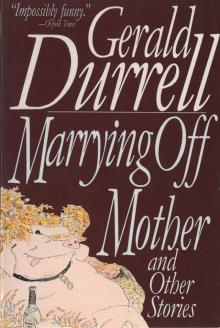 Marrying Off Mother
Marrying Off Mother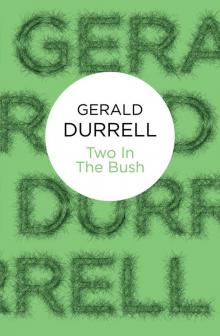 Two in the Bush
Two in the Bush